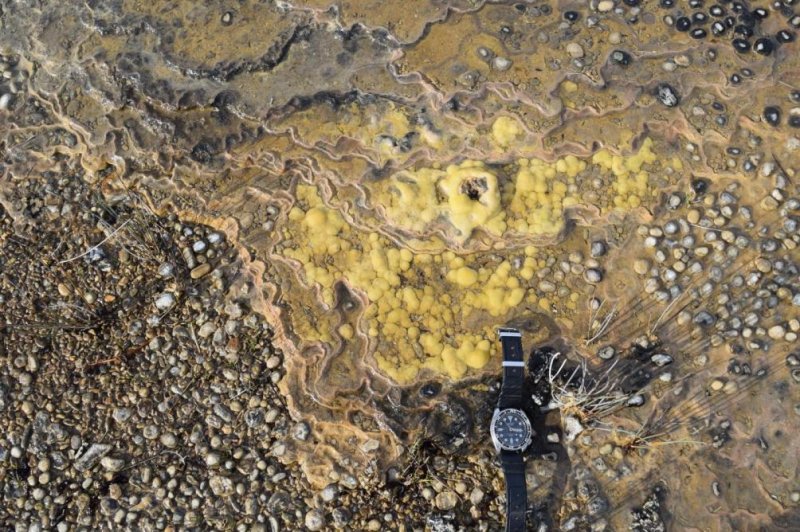Stromatolites are biofilms of microorganisms that integrate themselves into the surrounding geology, forming laminated super structures in rocks and soil. Photo by University of Tasmania
Nov. 13 (UPI) -- Scientists have discovered rare, living stromatolites among the wetlands of a remote Tasmanian Valley -- the first living stromatolites found on the island.
"Stromatolites are laminated structures of micro-organisms which have created layers of minerals using elements dissolved in the water in which they live," Bernadette Proemse, a researcher at the University of Tasmania, said in a news release. "Fossil stromatolites are the oldest evidence for life on Earth -- they first appeared 3.7 billion years ago!"
Living stromatolites are especially rare because other aquatic species like sea snails consume the microorganisms that form them.
Tasmanian Wilderness World Heritage Area is home to peat-bound karstic wetlands, which feature peaty soils on top and limestone beneath. The unique wetlands host spring mounds from which highly mineralized water flows, soaking the peat-rich soil. Structures in the underlying limestone force water to the surface, forming the spring mounds.
The minerals provide food for the biofilm of microorganisms that form the stromatolites. In fact, stromatolites have helped grow the mounds.
Scientists also found dozens of dead sea snails near the mounds.
"This is good for stromatolites because it means there are very few living snails to eat them. Fortuitously, these Tasmanian 'living fossils' are protected by the World Heritage Area and the sheer remoteness of the spring mounds," Proemse said.
Researchers described their unique discovery in a new paper published this week in the journal Nature.
"The discovery of living stromatolites in Tasmania is highly significant because stromatolites are rare globally and not previously known from Tasmania except as ancient fossils," said Roland Eberhard, a researcher with the Department of Primary Industries, Parks, Water & Environment. "DNA analysis indicates that the Tasmanian stromatolites are micro-organism communities which differ from all other known stromatolites."















